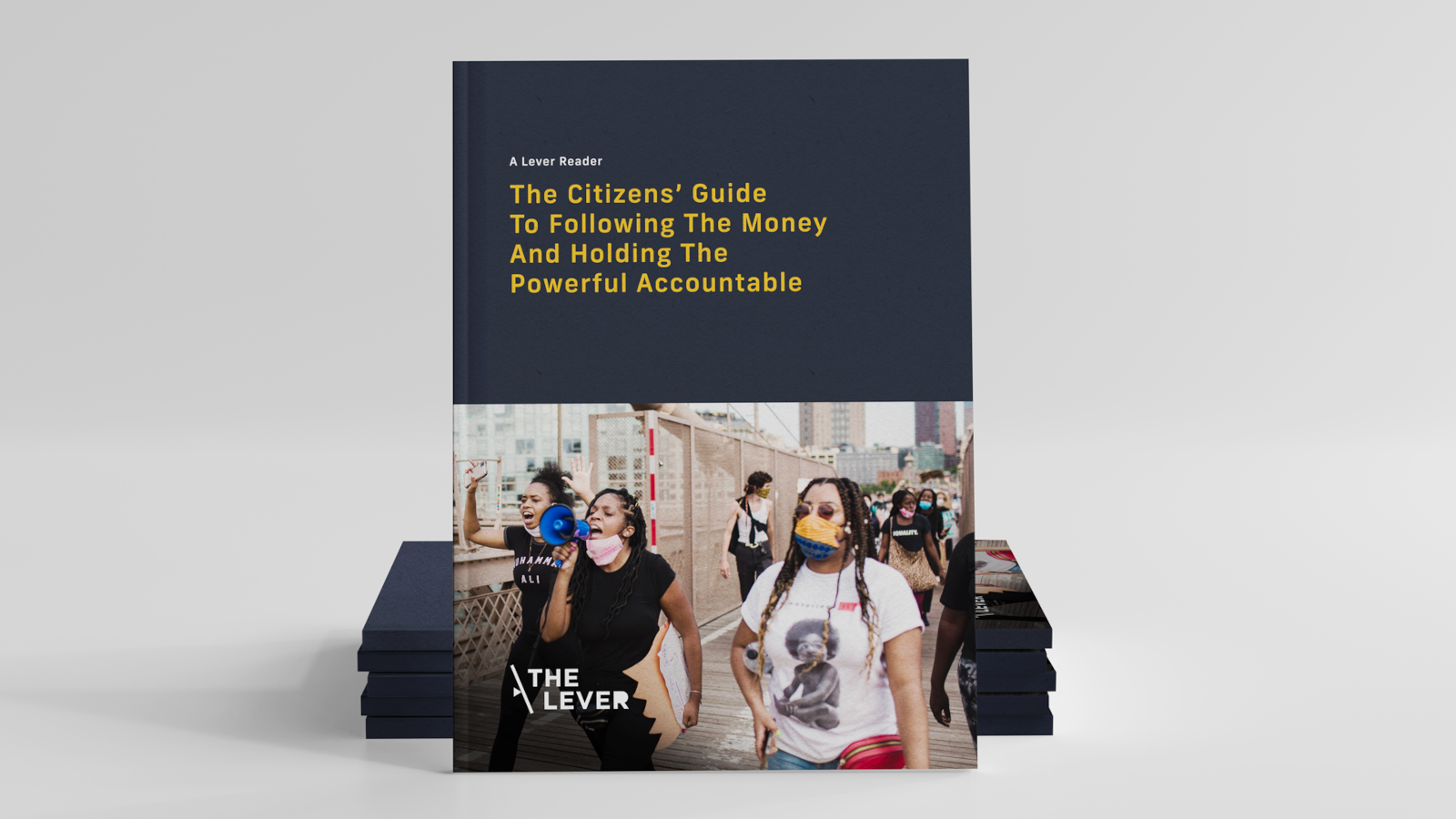Good things are happening! This week, we have amazing news to share: The Lever is now unionized. Also, we review the best developments of 2022, because this year’s wins are next year’s building blocks.
Read all about it in this week’s edition of You Love To See It below, then spread the word by sharing this article on Twitter and forwarding this email to encourage others to subscribe to The Lever.
The Lever Staff Form A Union
Labor is one of The Lever’s core beats, and we often celebrate union victories in our weekly You Love To See It newsletter. Today, we get to announce one here at home.
The Lever’s staff recently unanimously voted to unionize, and management agreed to voluntarily recognize the independent Lever Union. The Lever bargaining unit includes seven employees in the editorial, production, and marketing departments.
“The Lever staff believes every worker deserves a union,” said Lever Union representative and reporter Julia Rock. “The Lever is about taking on power — whether it is bankers, climate profiteers, or politicians. The best way we can do that is together.”
David Sirota, The Lever’s founder and editor-in-chief, said, “Congratulations to The Lever staff — I’m looking forward to another year in which we continue and expand our accountability journalism in the reader-supported newsroom that we’re building.”
In a few short years, we have built a sustainable, independent newsroom from scratch — an outlet that can compete with legacy media giants on some of the biggest stories of the day and also report important stories of corruption and influence that corporate media will never tell.
As we continue to build The Lever, we will do so with a united voice — and the power of a union.
Health Care Becomes A Human Right
In November, Oregon voters passed Measure 111, making affordable health care a fundamental human right. It became the first state in the country to change its constitution to enshrine the right to health care. The measure states: “It is the obligation of the state to ensure that every resident of Oregon has access to cost-effective, clinically appropriate and affordable health care as a fundamental right.”
By including the right to affordable health care in its constitution, Oregon will have more authority to address rising health care costs and prevent the legislature from cutting current recipients from Medicaid, including undocumented immigrants.
Passing Measure 111 and securing the constitutional right to health care was a lifelong goal of Portland Democrat Mitch Greenlick, who served in the state’s legislature and attempted at least eight times in 16 years to bring such a proposal before voters. Greenlick passed away in 2020, after advocating the proposal in that year’s legislative session.

LA Bans Oil And Gas Drilling
In a historic win for Los Angelenos on the front lines of the struggle against environmental racism, the LA City Council voted 12-0 on December 2 to ban new oil wells immediately and phase out existing ones within 20 years.
Los Angeles sits on the single largest urban oil field in the country, with nearly 4 million of its residents living within a quarter mile of an active or idle oil or gas well. Drilling infrastructure is predominantly located in low-income communities and Black and Latinx neighborhoods. For years, grassroots groups have organized for health protections in response to disproportionate exposure to drilling-released carcinogens and pollutants linked to respiratory disease, cancer, and other health conditions.
“The future of LA will be free from fossil fuel extraction,” Stand Together Against Neighborhood Drilling — LA, a coalition of community groups that spearheaded the law, said in a statement. “Black, Latinx, and other communities of color currently living near polluting oil wells and derricks in South LA and Wilmington will eventually breathe easier.”
In Six Years, Renewable Energy Would Pay For Itself
As if switching to renewable energy needs any more justification, a study published in June found that electrifying all energy sectors would immediately create lower energy prices. Moreover, all of the up-front costs of transitioning to 100 percent renewable energy would be paid back in just six years.
Professor Mark Jacobson, the study’s lead researcher, said, “By electrifying all energy sectors; producing electricity from clean, renewable sources; creating heat, cold, and hydrogen from such electricity; storing electricity, heat, cold and the hydrogen; expanding transmission; and shifting the time of some electricity use, we can create safe, cheap, and reliable energy everywhere.”
Global Renewable Energy Will Overtake Coal By 2025
As the cost of solar power has fallen by nearly 85 percent, global renewable power capacity is set to double by 2027. The International Energy Agency (IEA) recently predicted that solar power will become “the cheapest source of electricity in history” and that renewable energy will overtake coal as the largest source of electricity by early 2025.
The IEA’s report points to the energy crisis stemming from the war in Ukraine and new energy policies pushed by China, the European Union, and the United States as central drivers of renewable power acceleration. “This is a clear example of how the current energy crisis can be a historic turning point toward a cleaner and more secure energy system,” said Fatih Birol, the group’s executive director.
U.S. Eliminates Super-Pollutants
On September 21, the Senate ratified an international climate agreement — the Kigali Amendment to the Montreal Protocol — designed to cut greenhouse gas emissions by eliminating the use of hydrofluorocarbons (HFCs).
HFCs are chemicals that leak from cooling appliances like refrigerators and air conditioners. HFCs can be thousands of times more harmful than carbon dioxide in terms of heating the planet. Cutting their use could prevent half a degree Celsius of global warming by the end of the century, a vital step when every tenth of a degree matters.
Young People Are Embracing Unions Like No Generation Before
When an uptick in strikes in October made headlines and new workplaces launched unionization efforts every week, the Center for American Progress released a new report on generational “pro-union sentiment.” Gen Z, which includes people 23 years old and younger as of 2020, is more pro-union than nearly every other generation measured.
According to the report, “Members of Gen Z are entering the workforce at a time of growing economic uncertainty, as college degrees no longer promise job stability and young people describe high levels of economic anxiety.”
On average, 64 percent of Gen Z members approve of unions, compared to 61 percent of millennials. These findings build upon 2021 research conducted by Pew Research Center, which found that 69 percent of Americans between ages 18-29 reported feeling that “labor unions have a positive effect on the way things are going in the country,” compared with 55 percent of adults across the board.
Southern Service Workers Get Organized
On November 17, hundreds of service workers from across the South launched the Union of Southern Service Workers (USSW) during a three-day labor summit in Columbia, South Carolina. The new organization grew out of the Southern branch of the Fight for $15, a movement to raise minimum wage laws that brought together workers at hotels, gas stations, retail, home care, and restaurants during the pandemic to fight for better working conditions.
Seven of the 10 states with the lowest union membership are located in the South, where less than two percent of wage and salary workers are union members. USSW founding members Naomi Harris, 21, and Brandon Beachum, 35, told Capital & Main that antiracism is vital to their movement, since a large portion of Southern workers of color have been historically denied the protections of the National Labor Relations Act (NLRA) because they are farm workers, tipped workers, or domestic workers. Because of such exclusions by the NLRA, the USSW is not waiting to be sanctioned by the National Labor Relations Board to establish themselves as a union.
Through strikes, outreach and door knocking, cross-sector organizing, and antiracist historical analysis, USSW organizers have promised to win fair pay and better working conditions by “any means necessary” for the hundreds of thousands of workers in the service industry in the South.

Learn All Our Investigative Tricks
Score a copy of our Citizens’ Guide to Following the Money and Holding the Powerful Accountable, free with a paid subscription. The e-book gives you all the tools and tricks our reporting team uses to scrutinize power.
Finally:
After all the news this week, take a moment to read Danusha Laméris’ poem, “Small Kindnesses”:
I’ve been thinking about the way, when you walk
down a crowded aisle, people pull in their legs
to let you by. Or how strangers still say “bless you”
when someone sneezes, a leftover
from the Bubonic plague. “Don’t die,” we are saying.
And sometimes, when you spill lemons
from your grocery bag, someone else will help you
pick them up. Mostly, we don’t want to harm each other.
We want to be handed our cup of coffee hot,
and to say thank you to the person handing it. To smile
at them and for them to smile back. For the waitress
to call us honey when she sets down the bowl of clam chowder,
and for the driver in the red pick-up truck to let us pass.
We have so little of each other, now. So far
from tribe and fire. Only these brief moments of exchange.
What if they are the true dwelling of the holy, these
fleeting temples we make together when we say, “Here,
have my seat,” “Go ahead — you first,” “I like your hat.”




